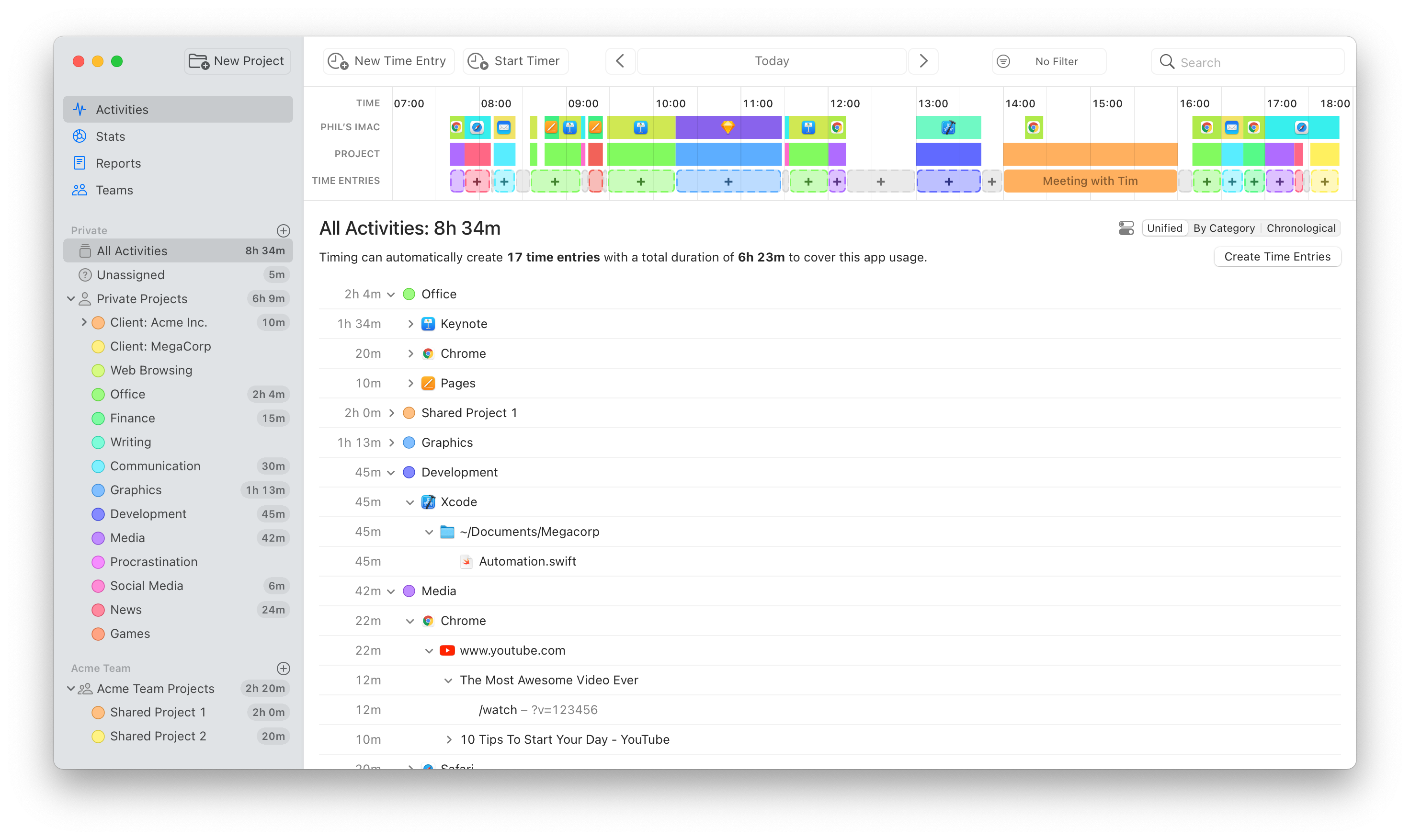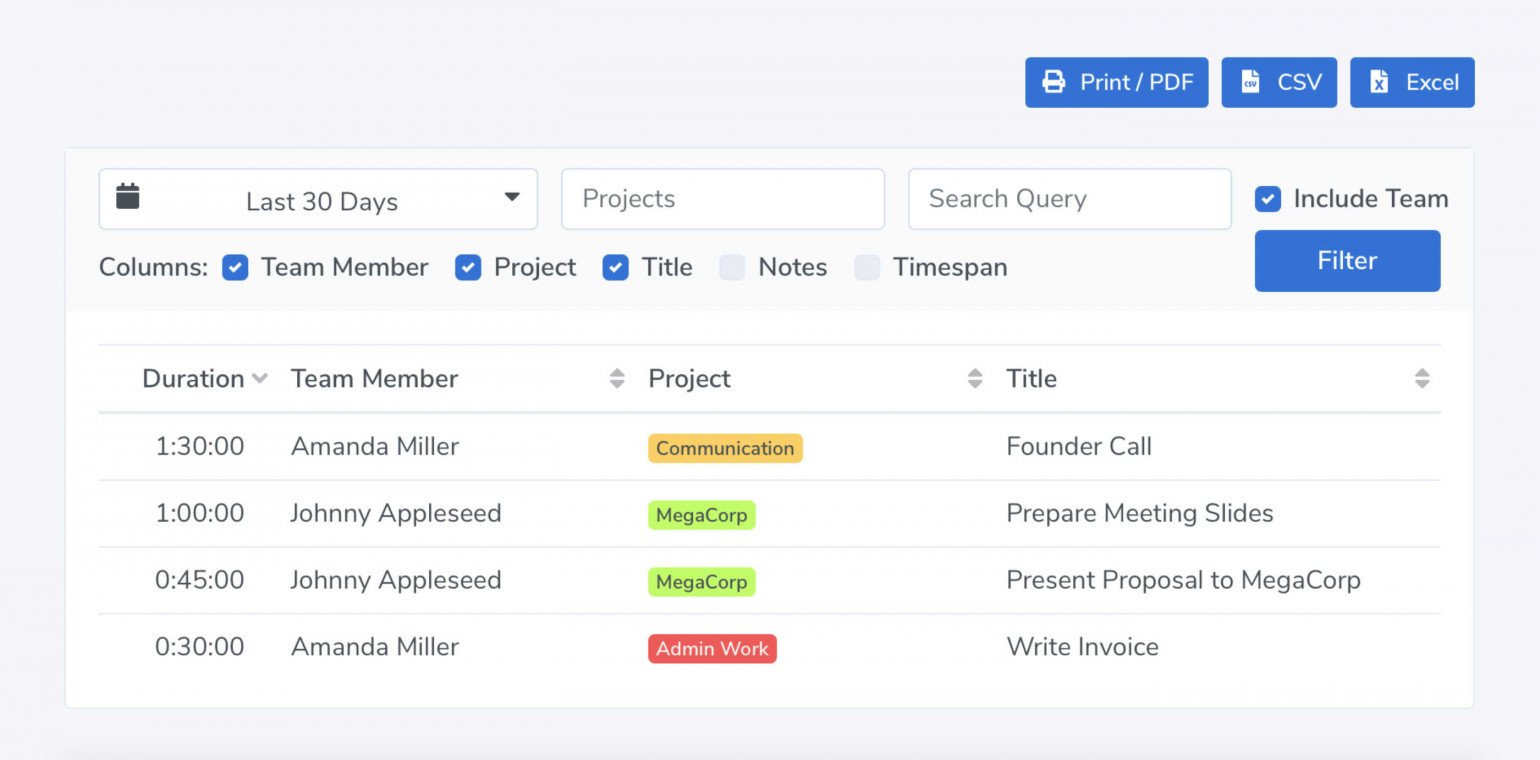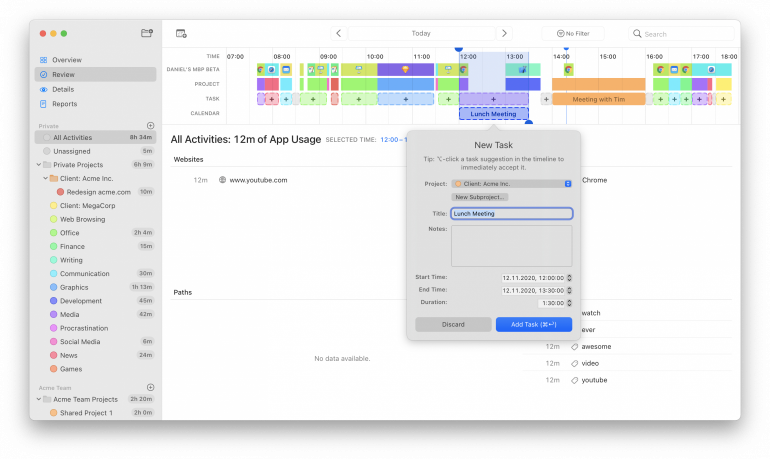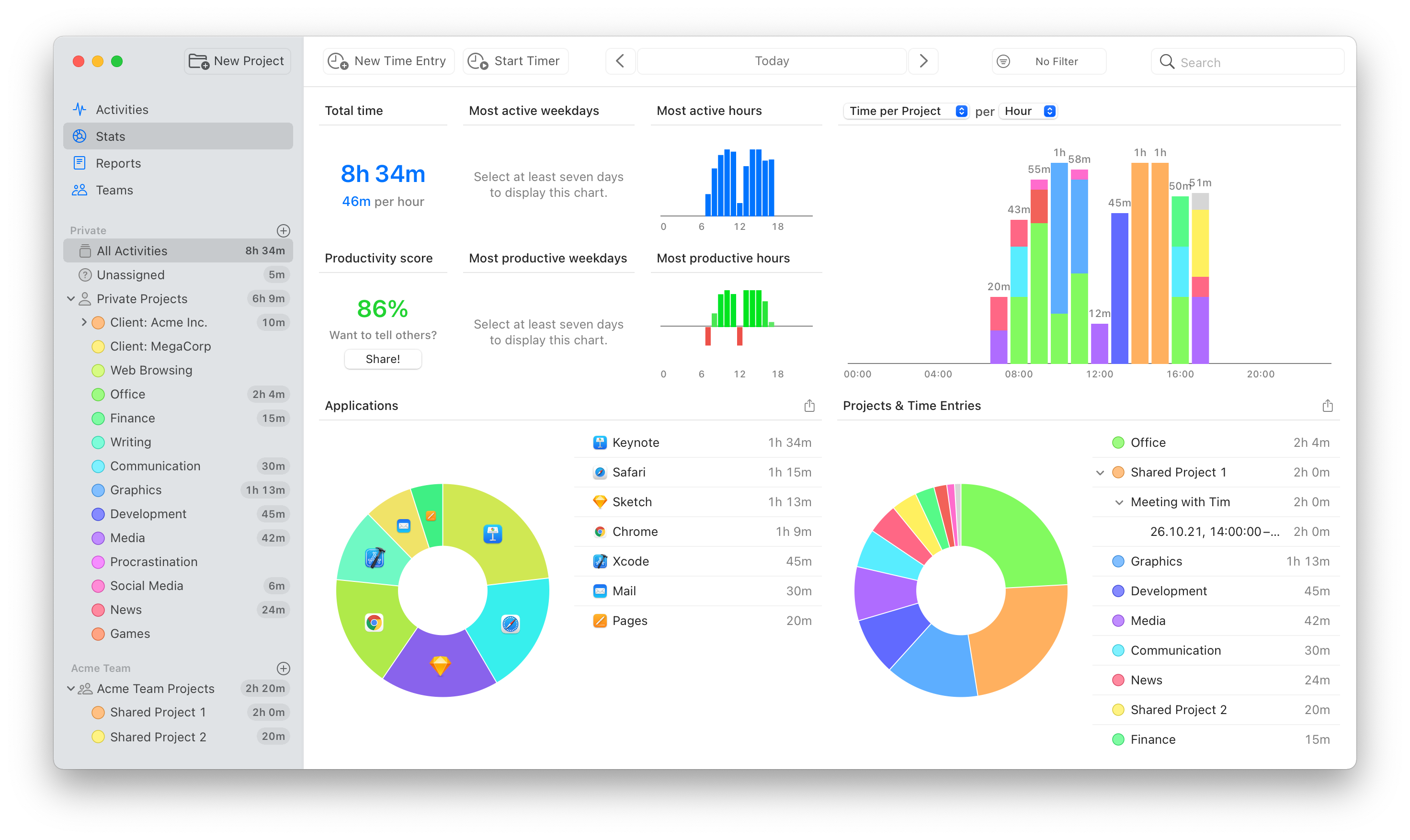How to Log Work Hours for Yourself and Your Team

Image: Christina Morillo
One of the most fundamental yet vital parts of completing any project is accurately logging work hours. Whether working solo or managing a team, keeping track of hours is essential to ensure clients get billed correctly and meet compliance standards.
Fortunately, we live in an age where this process is more efficient and streamlined than ever, and you’re not stuck punching that antiquated time clock.
In this post, we’ll explain how to log work hours and helpful tools you can use to make it as simple as possible. We’ll also go over best practices and common mistakes so you get started on the right foot.
Let’s jump right in.
Companies lose 20% of every dollar on average because of employee time theft. Share on X
Why Logging Hours is Important
There are three main reasons to keep track of your and your team’s hours.
First, logging hours is necessary for ensuring accurate invoicing, which is important for everyone involved with a project.
If you’re a freelancer, tracking hours ensures you send your client an accurate invoice and get paid correctly, while the client doesn’t over or underpay. If you manage a team, it ensures each team member receives those same benefits and charges your business appropriately.
This accuracy is crucial for larger teams where you need to keep track of multiple employees with possibly shifting schedules. Time theft is a significant problem when companies lose 20% of every dollar because of it, so the number of hours worked is something you should always watch.
Second, logging hours is a critical part of maintaining compliance. Labor laws like the Fair Labor Standards Act (FLSA) are in place to set standards on overtime pay, breaks, and rest periods to ensure companies comply with the law.
Employees maintain compliance by logging work hours, so there’s always a paper trail. If someone doesn’t log hours accurately, it can lead to fines and penalties and a general litigation headache.
Third, it helps you understand how you spend your time. Say, for example, you’re managing a team and want to know how much time you spend on a particular task and the efficiency of each team member. By maintaining a thorough log of work hours, you can see exactly how much time each member spends on each task, and patterns should emerge on team member productivity.
You could also identify and address inefficiencies to make your team more productive.
Or, if you’re working on a project with a client, logging work hours will provide you with data to compare against revenue. That way, you can determine project profitability to help you decide which clients are the most lucrative and who you should do business with long-term.
The bottom line is that logging hours is an integral part of running any business. If you haven’t started yet, we highly recommend starting as soon as possible.
A Key Tool to Log Work Hours
In the past, time tracking was rather primitive. There was old-fashioned manual timekeeping where you simply wrote down hours worked with pen and paper on sign-in sheets. And there were manual time clocks where you punched in and out.
But technology has come a long way in recent years. Now various sophisticated options let you log work hours accurately and do it automatically so you don’t have to record information manually.
Time tracking apps, in particular, are excellent for logging work hours and can be used by self-employed people and those who manage a small team or large enterprise. They offer a high level of accuracy, and many come with advanced features and functionality that not only efficiently track hours but provide access to in-depth reporting to help you identify potential areas of improvement.
While numerous time-tracking apps are on the market for Mac users, Timing is the most intuitive solution. It’s a native Mac app that automatically tracks your work so you can accurately record timesheets without having to start and stop timers. It does this by automatically recording how much time you spend on each app, document, and website.
Timing takes care of everything for you, which means you don’t have to worry about inaccurate work logs, and you can be more productive because you don’t have to deal with the hassle of timers. Instead, you can focus on completing your work, knowing you can consistently produce accurate timesheets.
If you’re working solo, you can use Timing to track every task you complete, down to the app, web page, and document, for a bird’s-eye view without lifting a finger. It captures everything and provides a detailed breakdown of how many hours you log.

For those managing a team, Timing for Teams lets you conveniently share projects with your team members and view their times from a single dashboard. You simply set up a team and invite colleagues. After joining, they can record time towards team projects and you can view their hours logged towards those projects in the Timing web app.

Note that, for privacy reasons, you can’t view the specific apps, websites, and documents your team members used. But you can see the total number of hours they logged on a project.
Another great time-saving feature is smart suggestions. Once you’ve assigned some of your app usage times to a project, Timing will automatically make suggestions on your timeline for blocks of time that belong together. You can then click those suggestions to quickly create a time entry for the whole period.
Another feature that makes Timing stand out is its integration with Apple’s Screen Time. Timing can import your iPhone and iPad usage from Screen Time, giving you a comprehensive overview of how you used all your devices. Most other time-tracking solutions are unable to give an overview of your mobile device usage.
As for meetings, Timing’s calendar integration lets you view your calendar events in the timeline and record time for them. In addition, Timing automatically asks if you want to record hours whenever you finish a video or audio call so all meeting time is accounted for.

Finally, Timing lets you conveniently organize your times into projects, giving you a detailed breakdown of how long you spent on all your activities. That way, there’s no guessing about how many hours to log when invoicing and you can see where your time is going.

Best Practices for Logging Work Hours
Now that we’ve established why logging work hours is paramount and identified a specific tool, let’s go over core best practices for further streamlining the process and keeping everyone on the same page.
Keep it Simple and Intuitive
Above all else, you must ensure your method is as simple as possible and eliminates any potential sources of confusion.
Finding your method starts with choosing an easy-to-understand and easy-to-implement time-tracking tool with no overly long learning curve. It also means developing a formula that allows you and your team members to input hours worked quickly and efficiently without any additional effort.
For example, instead of making team members choose between 10 or more different work activity categories and sub-categories to log their hours, boil it down to the essentials so they can track their time quickly and move on. For a very basic solution, you could consider generating QR codes and placing them at visible spots at the entrance and exit of your office. Team members could then scan these QR codes with their mobile devices to log the time of their arrival and departure.
And while you’ll want to leverage the helpful features found in time tracking software, don’t go out of your way to use every single feature if it’s not genuinely beneficial. In other words, don’t get “too cute” and use what you need only and nothing more.
Make the Process Super Quick
The time it takes to track time shouldn’t exceed the time you’re trying to save. In other words, you and your team members should be able to easily log their hours and move on to the next task.
To quantify, it shouldn’t take more than 10 minutes a day to input how long someone has spent on a project. However, the less amount of time, the better.
Again, we suggest using a tool like Timing that automatically records hours worked. You can track everything with just a few clicks for simple invoicing and detailed productivity insights.
Provide Basic Training on Your Time Tracking Software
A big part of success is reducing the learning curve and quickly getting team members up to speed. One way to do this is to offer training on your time-tracking software to educate team members on core features and how to use them correctly.
For instance, you could create a digital hub that shows new team members how to properly track their hours and provide video walkthroughs of the features they’ll be using. We’ve done this with our quick start guide, which walks new users through 10 easy steps for time-tracking success.
With 25% of company leaders believing that putting proper effort into team member training has a measurable impact on performance, it’s well worth your time.
Anticipate Friction
No matter how streamlined your work logging process is, friction will inevitably arise. Without a swift response plan, it can spill over, causing you to spend unnecessary time sifting through the chaos rather than working on core business activities.
Rather than getting caught off guard, you can make everyone’s life easier by anticipating friction and developing a solution to get things back on track.
An example would be creating a FAQ document that succinctly answers issues people have had in the past, along with the solutions. For example, if there’s ambiguity on how to label or categorize times spent in meetings, you could have a quick paragraph outlining the official company policy for that.
Regularly Review Time Sheets
This practice piggybacks off anticipating friction, where you can’t expect every team member to 100% accurately report every hour spent on every project. Even those who know every step of the process may make a mistake from time to time. And there’s always a high potential for hiccups with newer team members.
That’s why another critical best practice is regularly reviewing your team members’ time sheets to double-check accuracy, especially when new workers are getting their bearings. This review should also help you find any potential red flags for time theft so you can promptly address them.
Note that an automatic time tracking solution can be helpful for limiting risk, as it dramatically reduces the potential for human error. Timing, for instance, records your time automatically to ensure there’s no discrepancy with time sheets.
Common Mistakes Teams Make When Logging Work Hours
For the rest of this post, let’s look at some of the most common mistakes teams make and how to overcome them.
Not Fully Explaining the Benefits of Logging Work Hours to Team Members
It’s hard to dispute the benefits of logging work hours and implementing a user-friendly platform like Timing. But it’s important to remember that not all team members will be enthusiastic about it.
Some, for instance, may feel like you’re questioning their trustworthiness by asking them to record their activities. Others may view it as an “additional chore” that adds an extra step to their workday.
Whatever the reason, not everyone will be keen on it.
But you can usually overcome this resistance by clearly explaining how logging work hours benefit everyone, such as ensuring your team members get accurately paid for their time. And with a user-friendly platform like Timing, everything tracks automatically, so there’s no added inconvenience for your team members.
To drive it all home, you could offer a case study of another company that has successfully used the software, so your team can connect the dots. Highlighting the perks should make getting team members to buy in much easier.

Image: Fauxels
Not Properly Testing Your Work Logging Framework
Like any business framework, it usually takes some testing to ensure everything works correctly and fires on all cylinders. Your time-tracking framework is no exception.
For example, imagine implementing a new time-tracking software and using specific features. Before rolling it out team-wide, you should likely perform a micro test where you use it yourself to ensure everything works correctly and see if it needs any adjustments.
Odds are, you’ll want to make a few tweaks here and there. So taking the time to test your framework properly in advance should allow you to refine it until it’s just right without creating unnecessary headaches for your team members.
Assuming Everything Will Always Go Right
A certain level of trial and error is involved with establishing a formal system to log work hours.
As we mentioned earlier, you should anticipate some friction. Having this mindset should help prepare you for anything that comes your way after implementation, and you’ll have a game plan for resolving those issues.
Not Addressing Privacy Concerns
Privacy concerns have increased as the modern workplace, both for in-house and remote workers, becomes more saturated with technology. Today, there are multiple laws and regulations to protect employee privacy, with a prime example being the Electronic Communications Privacy ACT (ECPA).
Under the ECPA, for instance, business owners have the right to monitor team member activities as long as they have consent and monitor activities within reason. But there are limitations in place. One would be that you can’t disclose a team member’s private information to anyone and must protect it from being leaked to unintended third parties.
This Business News Daily article offers some helpful information on this topic. In it, they mention the legalities of employee monitoring such as state and federal workplace privacy laws, the ethics of employee monitoring, and what you can and can’t do. They also discuss the steps you can take to avoid legal issues.
It’s also helpful to understand the differences between employee monitoring and time tracking. Employee monitoring involves monitoring team members’ actions and behavior, whereas time tracking involves recording and measuring time spent on tasks and projects. You can learn more about the differences in this post.
The bottom line is that you need to be sure you’re not overstepping your boundaries when tracking worker activity, which is why Timing doesn’t allow you to view the exact apps, documents, and websites team members use. Instead, you just see the number of hours logged on a project.
Wrapping Up
Besides ensuring accurate invoicing, logging work hours is essential for several other reasons, such as ensuring compliance with labor laws and optimizing productivity. Therefore, it is imperative to build a framework to log work hours efficiently and continually look for ways to refine it.
A big part of this is using the right time-tracking tool to automate much of the process and ensure high accuracy. By leveraging technology like Timing and tapping into its comprehensive features, you can log work hours without expending more time than necessary. That way, you can focus more on core business tasks and ensure you and your team members can do their best work.
To see Timing in action and learn how it can help you log work hours hassle-free, get your 30-day trial today. No credit card is required.
